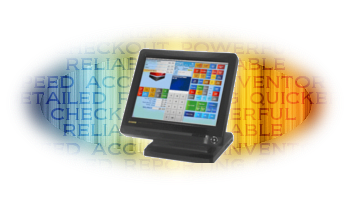Top 5 reasons a point of sale system is better than a cash register system
One thing all business owners have in common is the need for some type of cash management system to process sales. The typical cash management system has a life span of between 10-15 years with upgrades every 5-7 years. Due to the many years of service a business owner can expect from their system, it is important to choose the best option now and for the future. But what should you choose a cash register system or a point of sale (POS) system?
POS systems provide business owners with many features and benefits you simply cannot find in a traditional cash register system making POS systems far superior. So let’s take a look at some of the benefits.
POS systems can quickly store and manage more information than a traditional cash register. This allows business owners and managers to quickly pull up vital reports from all lanes or terminals from one central location, usually the back office. Point of sale systems also provide the ability to pull reports on the fly from any terminal giving you up to date information on sales, items, time logs and more.
POS systems allow a cashier to quickly scan, modify and complete a transaction by using a bar code scanner or scanner/scale connected to the system. Scanning can be up to 20 times quicker than manual entry. For example, for 12 characters of data (typical UPC length), keyboard entry takes 6 seconds. Scanning a 12 character bar code takes .3 seconds.
Only keying in prices? Let’s say your average price is 4 characters long. Scanning is still around 10 times faster than manual entry.
POS systems also make performing refunds, voids or no sales as easy as pushing a button. These functions can be restricted based on role, such as manager only.
Imagine if you could drastically reduce the number of human errors when manually keying in sales on a cash register system. Now imagine how much more money you could have if those errors were reduced. This is where a point of sale system shines.
The error rate for manual entry or typing is one substitution error in every 300 characters typed. Error rates for bar codes range from one substitution error in every 15,000 to 36 trillion characters scanned (depending on the type of bar code). These errors can add up to big costs over time in terms of time spent re-keying information or not noticing the wrong price was entered, possibly shorting the business or customer the proper amounts.
Changing prices is easy too. Prices are stored in a database and can be easily retrieved with a scan or the push of a button. Using a POS system you can change the price of an item on all terminals by changing the price only once at the back office. Some POS systems even allow you to print shelf labels for your items featuring the new price directly from the office eliminating the need to put a price tag on each item.
Point of sale systems allow you to track inventory much more accurately than a traditional cash register system. With a POS system you can accurately keep track of how many items were sold. You can then use this data to get extremely accurate inventory counts and detailed information on product movement.
Most POS software allows you to perform your inventory tracking and counting using the same program. With traditional cash registers you must pull sales data from the register, manually type the data into a program, such as Excel, and then figure out your inventory counts and product movement. A POS system will help automate these manual data entry processes.
Some systems allow for different inventory methods depending on your type of business. Usually there are two types, perpetual and periodic. Perpetual inventory tracks the current number of items you have in your store in real time by lowering your total inventory by the quantity scanned at checkout. Periodic inventory allows you to take inventory counts every month, quarter, year, etc. to track inventory and compare with sales reports to view product movement.
Unlike a traditional cash register system, POS systems can easily scale to meet the specific needs of your business as it grows. Many peripherals, add-ons and modules are available to expand your system as particular needs arise. Time to add a new checkout? Additional lanes and terminals can be quickly added and integrated with a POS system.
Have multiple stores or hoping to expand in the future? POS systems allow you to easily manage all your stores from a central location or head office. Pull valuable reports and perform item maintenance on any one or all of your stores from the head office to put you in full control of your growing business.

